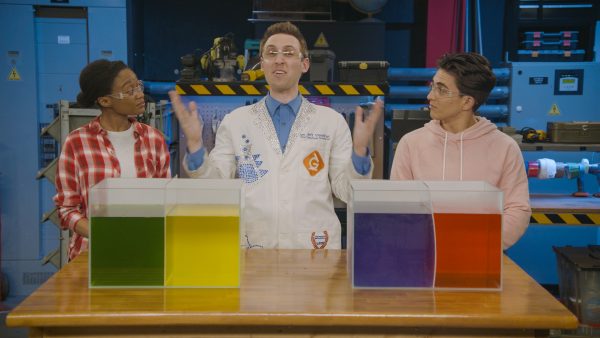If you are on a school computer or network, ask your tech person to whitelist these URLs:
*.wistia.com, fast.wistia.com, fast.wistia.net, embedwistia-a.akamaihd.net
Sometimes a simple refresh solves this issue. If you need further help, contact us.
Climate Zones & Ocean Currents Activity for Kids
Saltwater Density Layers DIY
- Duration: 20-30 min
- Difficulty: Easy
- Cost: $0 to $10
Learn how to make layers of saltwater with different densities!
Material List
- 4Cups of water
- 4Different colors of food coloring
- 1Bowl of salt
- 1Tablespoon
- 1Test Tube
- 1Pipette
Instructions
- 1Add a few drops of food coloring to each cup of water to make 4 different colors.
- 2Add different amounts of salt to each cup of water. No salt in the first cup. 1 tablespoon of salt in the second cup. 2 tablespoons of salt in the third cup. And 3 tablespoons of salt in the fourth cup. Then mix up all the contents in each cup.
- 3To make layers, use the pipette to carefully transfer each of the layers into the test tube, one at a time.
- 4The liquid with the most amount of salt goes on the bottom, followed by the liquid with the second most amount of salt, then the third, and finally, add the liquid with no salt.
- 5To help the layers stay separate, add the liquid slowly and tilt the test tube to transfer the liquid down the side.
How It Works
You’ll see that the 4 layers of water stacked in separate layers. This works because each band of saltwater has a different density. Water with more salt is denser and will be at the bottom. The water with the least amount of salt is less dense, so it stays at the top. In the real world, ocean water can also vary in how much salt is dissolved in it. Areas near the poles can be saltier than areas near the equator. Differences in the amount of salt in ocean water can create ocean currents, which moves thermal energy around our planet.
Find More
Exciting Activities
More Activities
Browse All
Full Lessons
Watch Full Lessons
Skip, I will use a 3 day free trial
Enjoy your free 30 days trial
We use cookies to make your experience with this site better. By using this site you agree to our use of cookies. Click "Decline" to delete and block any non-essential cookies for this site on this specific property, device, and browser. Please read our privacy policy for more information on the cookies we use.Learn More
We use cookies to improve your experience. By using this site, you agree to our use of cookies. Click "Decline" to block non-essential cookies. See our privacy policy for details.Learn More







